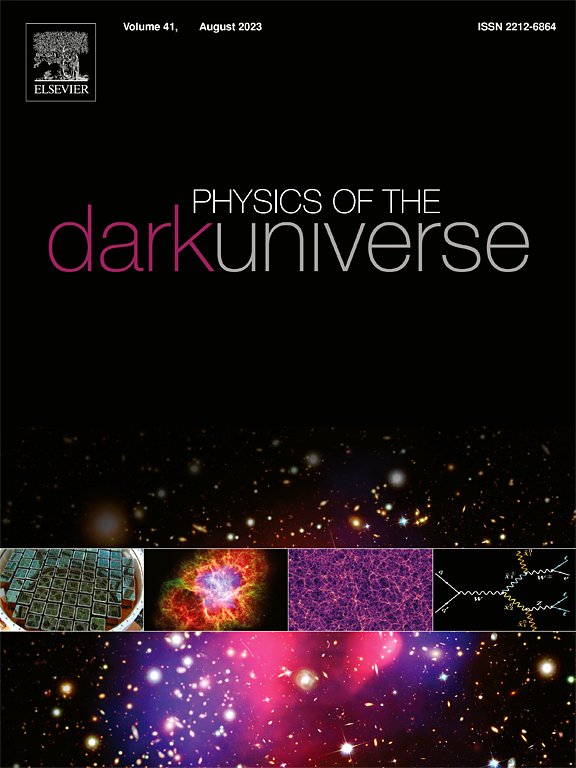Optical properties of black holes immersed in Galactic Dark Matter Halo
IF 6.4
2区 物理与天体物理
Q1 ASTRONOMY & ASTROPHYSICS
引用次数: 0
Abstract
We present a comprehensive investigation into the optical and topological properties of black holes (BHs) immersed in a Galactic Dark Matter Halo (GDMH). Our analysis focuses on shadow morphology, photon ring luminosity, and thermodynamic classification, using spherically symmetric accretion models in both static and infalling frameworks. In both scenarios, we observe that the shadow radius decreases monotonically with increasing halo parameter (), reflecting the influence of dark matter on photon trajectories. Within the static accretion model, the brightness of the photon ring intensifies significantly with increasing , more prominently than with variations in the asymptotic circular velocity (). BHs surrounded by radially infalling accretion flows exhibit darker shadows compared to those with static flows, a consequence of relativistic Doppler dimming; however, the shadow size remains invariant, reaffirming its geometric origin. We further analyze the visual manifestation and observational significance of these luminous features, including shadow contours and intensity profiles. Finally, using the generalized off-shell Helmholtz free energy framework, we classify the BH in GDMH as belonging to the topological class, indicating a thermodynamically unstable configuration with a single negative winding number.
沉浸在银河系暗物质晕中的黑洞的光学特性
我们对沉浸在银河暗物质晕(GDMH)中的黑洞(BHs)的光学和拓扑特性进行了全面的研究。我们的分析集中在阴影形态、光子环亮度和热力学分类上,在静态和落入框架中使用球对称吸积模型。在这两种情况下,我们观察到阴影半径随着光晕参数(a)的增加而单调减小,反映了暗物质对光子轨迹的影响。在静态吸积模型中,光子环的亮度随a的增加而显著增强,比随渐近圆速度(Vc)的变化更为显著。被吸积流包围的黑洞比静态流的黑洞阴影更暗,这是相对论多普勒变暗的结果;然而,阴影的大小保持不变,重申其几何起源。我们进一步分析了这些发光特征的视觉表现和观测意义,包括阴影轮廓和强度分布。最后,利用广义离壳Helmholtz自由能框架,我们将GDMH中的BH归为W1−拓扑类,表明其具有单负圈数的热力学不稳定构型。
本文章由计算机程序翻译,如有差异,请以英文原文为准。
求助全文
约1分钟内获得全文
求助全文
来源期刊

Physics of the Dark Universe
ASTRONOMY & ASTROPHYSICS-
CiteScore
9.60
自引率
7.30%
发文量
118
审稿时长
61 days
期刊介绍:
Physics of the Dark Universe is an innovative online-only journal that offers rapid publication of peer-reviewed, original research articles considered of high scientific impact.
The journal is focused on the understanding of Dark Matter, Dark Energy, Early Universe, gravitational waves and neutrinos, covering all theoretical, experimental and phenomenological aspects.
 求助内容:
求助内容: 应助结果提醒方式:
应助结果提醒方式:


